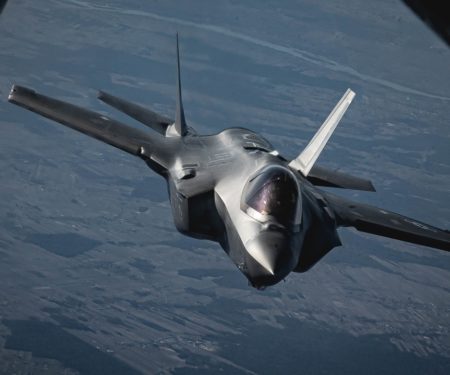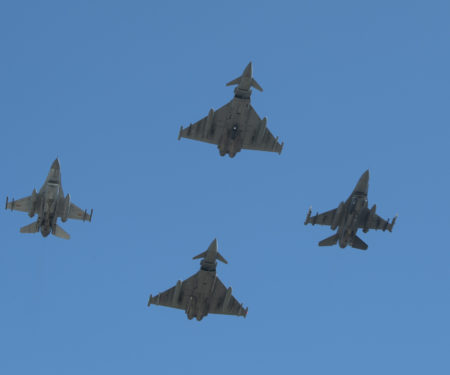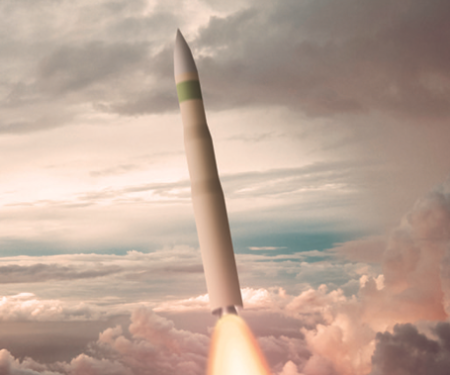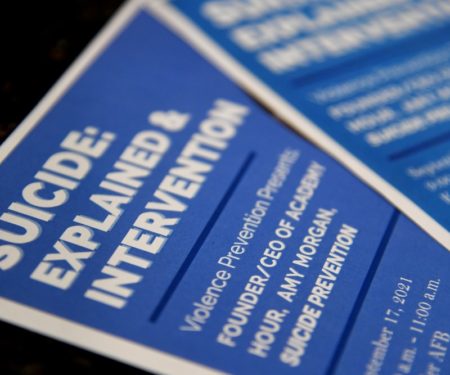Radar Sweep
As Classified B-21 Bomber Nears Flight, Secret Facility Sees More Curious ‘Probing’
Weird things keep happening at Air Force Plant 42. Drunk drivers ramming into barbed wire fences. A lost traveler looking for a gas station. Seemingly repetitive auto accidents. As the Air Force gets ready for first flight of the highly classified B-21 bomber, service officials told Breaking Defense the secretive facility where it is being built has seen a rising number of incursions — suspected snoopers hoping to sneak a peak at the latest secret project. “We are seeing increased incidents of what I will call probing,” said David Smith, director of Air Force Plant 42, where Northrop Grumman is building the service’s new stealth bomber, the B-21 Raider.
Patriot Missile Battery Heading to Slovakia Amid Ukraine Invasion Response
The Army will send a Patriot missile battery to Slovakia, the Pentagon announced Friday, to backfill that country’s air defense capabilities. The Slovakian government, in turn, has agreed to give its sole, Russian-made S-300 surface-to-air system to Ukraine to aid in targeting Russian aviation.
Elon Musk Visits US Air Force Academy
SpaceX founder and CEO Elon Musk stopped by the United States Air Force Academy on April 7 to meet with cadets and discuss our future in space.In his comments, Musk shared his problem-solving philosophy and addressed the connection between military and commercial space interests. “If we’re not blowing up engines, we’re not trying hard enough,” said Musk.
PODCAST: Space as a Warfighting Domain
In Episode 71, host John "Slick" Baum speaks with AFA’s Mitchell Institute for Aerospace Studies’ retired Gen. Kevin Chilton about the realities of modern military operations in space. While the U.S. did not instigate or favor turning space into a warfighting domain, our adversaries pressed in that direction, so the U.S. must respond. This means developing a range of terrestrial and space-based defensive and offensive options to deter and, if necessary, defeat attacks. The U.S. must also hold our adversaries' space capabilities at equal risk, mirroring capabilities in every other domain. To make progress, the U.S. must pursue operational concepts, strategies, and technologies that embrace both offensive and defensive capabilities, integrate space with the other warfighting domains to allow for combined combat actions, and train Guardians not just as technical experts, but warfighters. As an astronaut and past commander of Air Force Space Command and U.S. Strategic Command, Chilton has particularly unique insights into these issues.
Airmen are Pissed that an Entire C-17 Crew Except for the Maintainer Received a Distinguished Flying Cross
The Air Force recently honored four of its airmen for their performance during last year’s evacuation of Kabul, Afghanistan by awarding the Distinguished Flying Cross. But many airmen are fuming after noticing that one of the crew did not receive the prestigious award, despite playing a key part in the mission. That airman was the flying crew chief, Staff Sgt. Dennis Gonzales-Furman, of the 437th Aircraft Maintenance Squadron. Gonzales-Furman and his fellow airmen were flying members of the Army’s 82nd Airborne Division to Kabul aboard a C-17 cargo jet on Aug. 15 when thousands of civilians breached the airfield at Kabul’s Hamid Karzai International Airport. The civilians were fleeing the Taliban, who had just seized control of the capital city.
A Virtual Revolution in Air Force Training
Called T3—for Technical Training Transformation—the training, developed in conjunction with civilian technology companies, swaps virtual reality tools for the Air Force’s usual approach, which leans heavily on printed manuals and classroom instruction. T3 launched in 2020, and the Air Force says it has spent $11.8 million developing various VR training tools for those who maintain aircraft. The aim is partly to boost engagement with young recruits who’ve grown up with digital devices in their homes and classrooms and who, because of that, learn differently from those of previous eras.
US Space Force to Test Experimental Navigation Satellite in Upcoming Army Exercise
The Air Force Research Laboratory and L3Harris will begin integrated testing this summer of an experimental satellite with implications for a future hybrid precision, navigation and timing architecture. Navigation Technology Satellite-3 (NTS-3) is being designed to showcase new PNT technology that could shape future upgrades to GPS satellites and inform a possible new acquisition program to augment today’s constellation. Once on orbit in late 2023, the satellite will conduct more than 100 experiments testing different technology, like a digital signal generator that can be reprogrammed on-orbit to broadcast new signals. The Air Force awarded L3Harris an $84 million contract in 2018 to develop the NTS-3 satellite.
US Space Force Releases Decades of Bolide Data to NASA for Planetary Defense Studies
An agreement between NASA and the U.S. Space Force recently authorized the public release of decades of data collected by U.S. government sensors on fireball events (large bright meteors also known as bolides) for the benefit of the scientific and planetary defense communities. This action results from collaboration between NASA’s Planetary Defense Coordination Office (PDCO) and the U.S. Space Force to continue furthering our nation’s efforts in planetary defense, which include finding, tracking, characterizing, and cataloguing near-Earth objects (NEOs).
SpaceX Launches 3 Visitors to Space Station for $55M Each
SpaceX launched three rich businessmen and their astronaut escort to the International Space Station on Friday for more than a week’s stay, as NASA joins Russia in hosting guests at the world’s most expensive tourist destination. It’s SpaceX’s first private charter flight to the orbiting lab after two years of carrying astronauts there for NASA. Arriving at the space station Saturday are an American, a Canadian and an Israeli who run investment, real estate and other companies. They’re paying $55 million apiece for the rocket ride and accommodations, all meals included.




